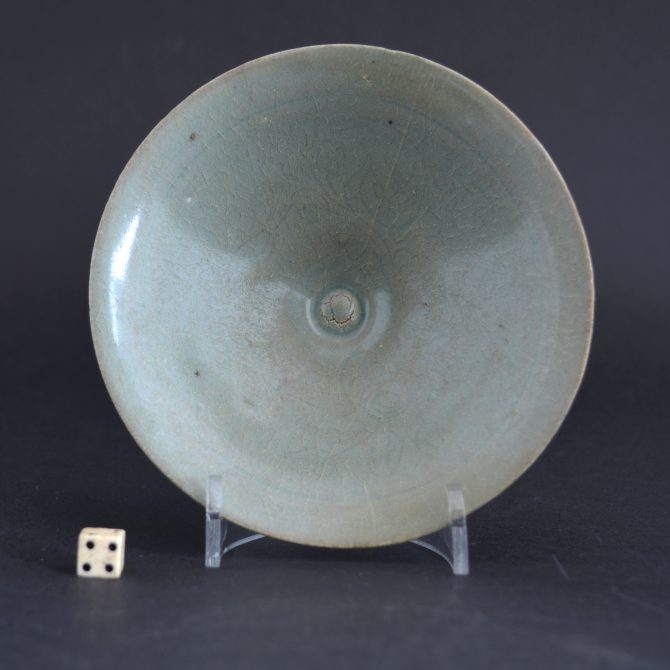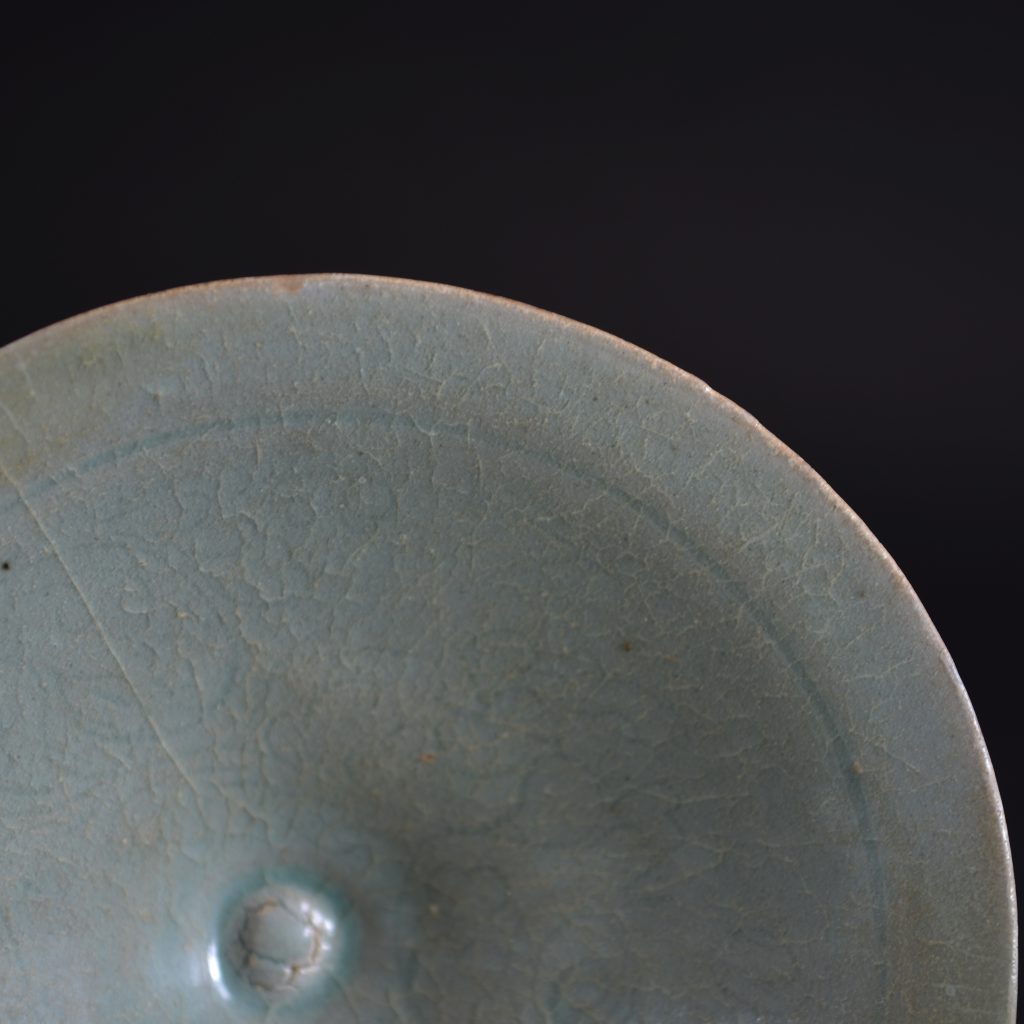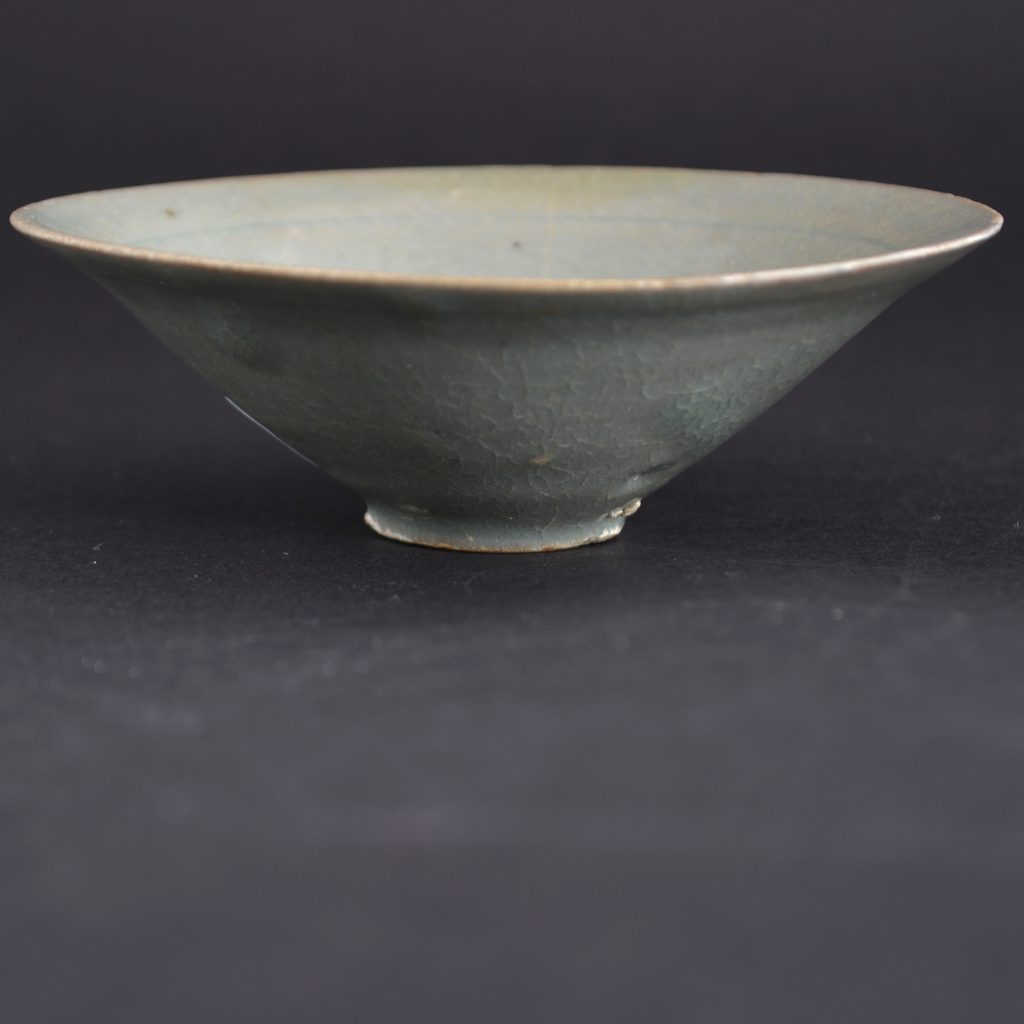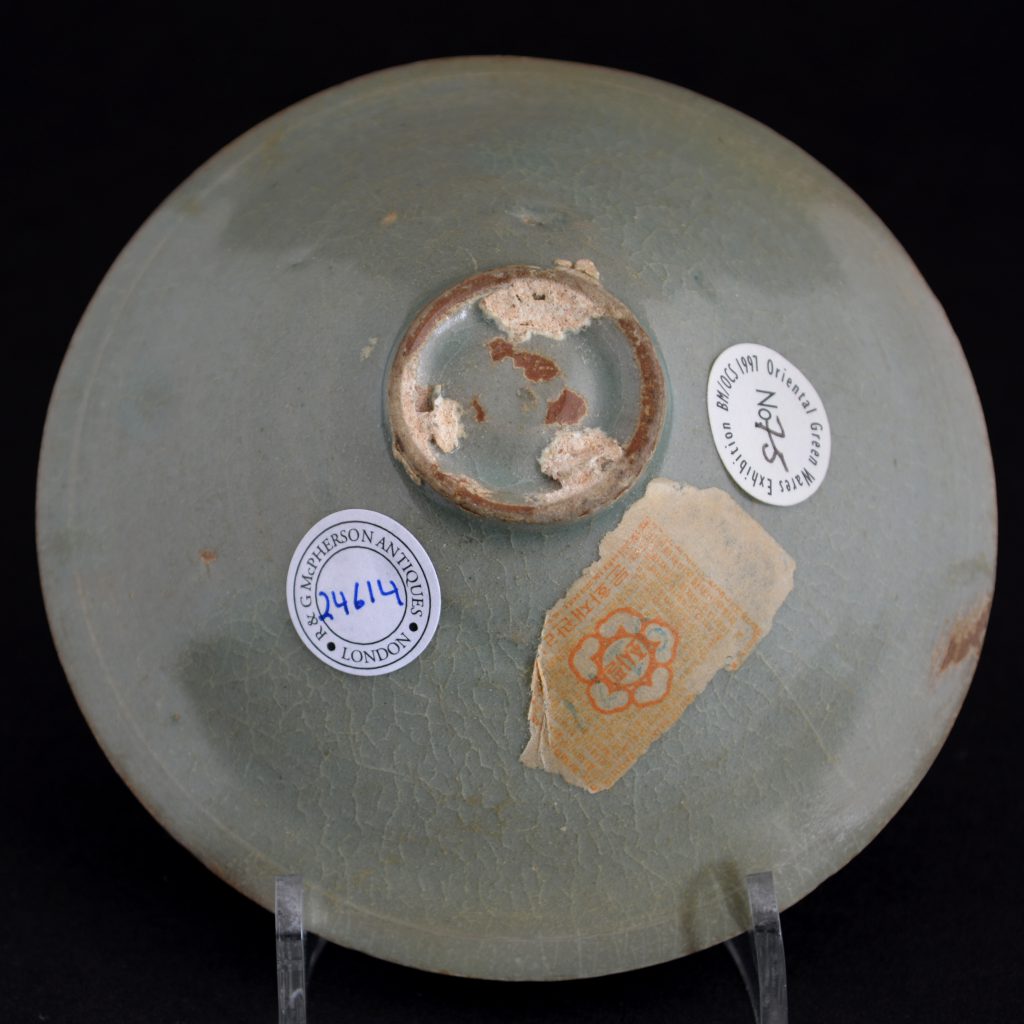
A Korean Celadon Bowl, Koryo Period 918 – 1392.
A finely potted Korean celadon bowl of conical form with delicately incised flowers , Koryo Period (918 – 1392) c.12th century. The base with three spur marks.
SOLD
- Condition
- There is one fine but very long crack to the rim c.54 mm.
- Size
- Diameter : 11.5 cm (4 1/2 inches)
- Provenance
- Exhibited at the British Museum as part of the Oriental Ceramics Society Green Wares Exhibition in 1997 item No.75.
- Stock number
- 24614
Information
Koryo Ceramics :
Korean ceramics of the Koryo Period (918 – 1392) chiefly comprise of Celadon wares, although influenced by Chinese Song Dynasty (960-1279) Yue Celadons they are distinctly Korean, although there is a geological connection between the Yue and Korean celadon kilns which might add to the similarity in appearance between the two. The distinct colours achieved by Korean potters owe much to the raw materials employed. The presence of iron and iron oxide as well as manganese oxide in the clay, and quartz particles in the glaze give these celadons their unique appearance. Firing temperatures were commonly around 1150ºC, and the level of oxygen within the kiln was dramatically reduced at some stage of the firing; this is known as a reducing, rather than an oxidizing atmosphere. Koryo celadon are often plain, but decoration included incised, carved, impressed, or inlaid designs. The inlaid designs are distinctly Korean, metallic compounds like iron oxide (black or brown), copper oxide (red), and even occasionally gold colourings were added to slip which them was rubbed into an impressed design producing the look of an inlay.


